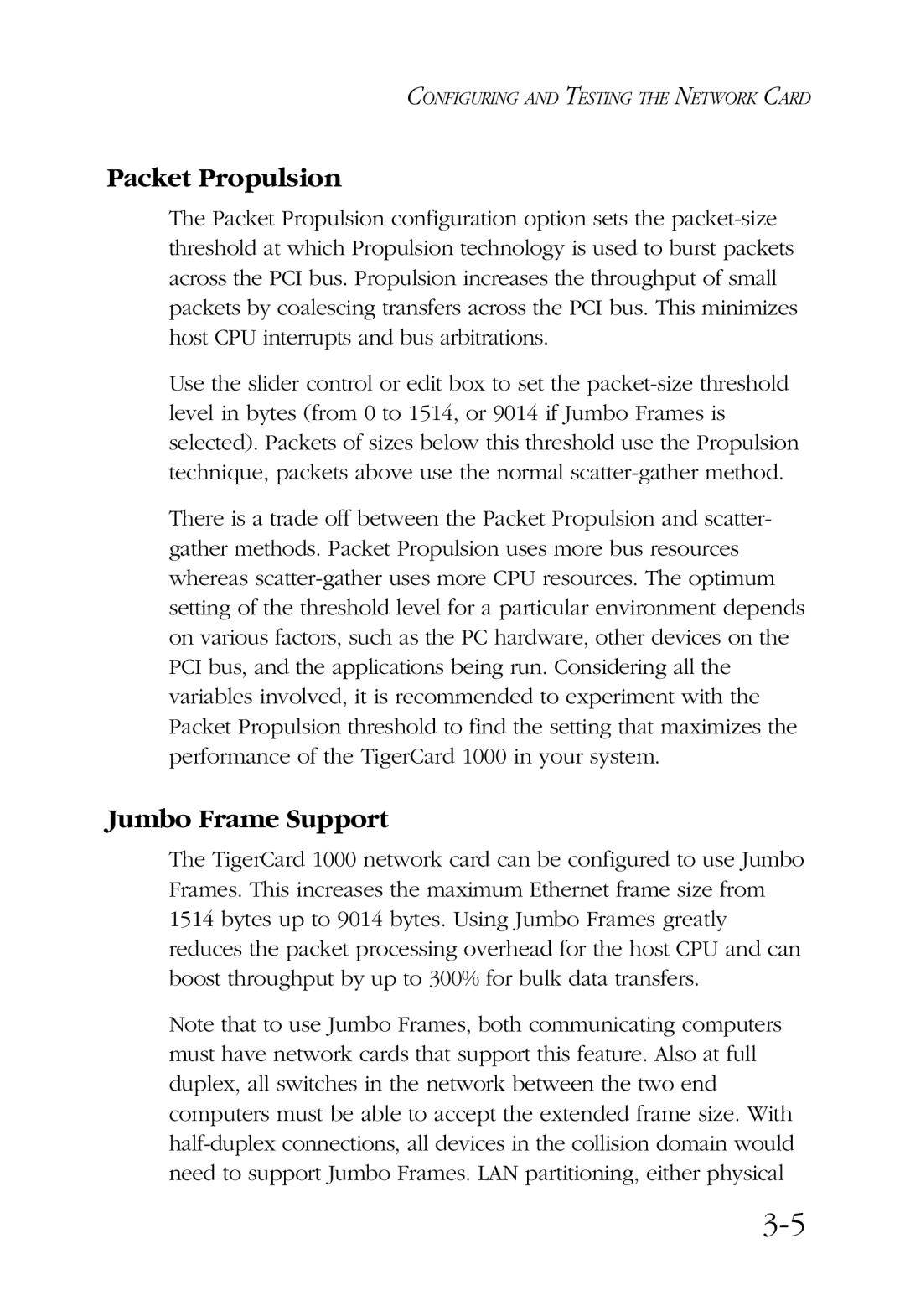CONFIGURING AND TESTING THE NETWORK CARD
Packet Propulsion
The Packet Propulsion configuration option sets the packet-size threshold at which Propulsion technology is used to burst packets across the PCI bus. Propulsion increases the throughput of small packets by coalescing transfers across the PCI bus. This minimizes host CPU interrupts and bus arbitrations.
Use the slider control or edit box to set the packet-size threshold level in bytes (from 0 to 1514, or 9014 if Jumbo Frames is selected). Packets of sizes below this threshold use the Propulsion technique, packets above use the normal scatter-gather method.
There is a trade off between the Packet Propulsion and scatter- gather methods. Packet Propulsion uses more bus resources whereas scatter-gather uses more CPU resources. The optimum setting of the threshold level for a particular environment depends on various factors, such as the PC hardware, other devices on the PCI bus, and the applications being run. Considering all the variables involved, it is recommended to experiment with the Packet Propulsion threshold to find the setting that maximizes the performance of the TigerCard 1000 in your system.
Jumbo Frame Support
The TigerCard 1000 network card can be configured to use Jumbo Frames. This increases the maximum Ethernet frame size from 1514 bytes up to 9014 bytes. Using Jumbo Frames greatly reduces the packet processing overhead for the host CPU and can boost throughput by up to 300% for bulk data transfers.
Note that to use Jumbo Frames, both communicating computers must have network cards that support this feature. Also at full duplex, all switches in the network between the two end computers must be able to accept the extended frame size. With half-duplex connections, all devices in the collision domain would need to support Jumbo Frames. LAN partitioning, either physical
